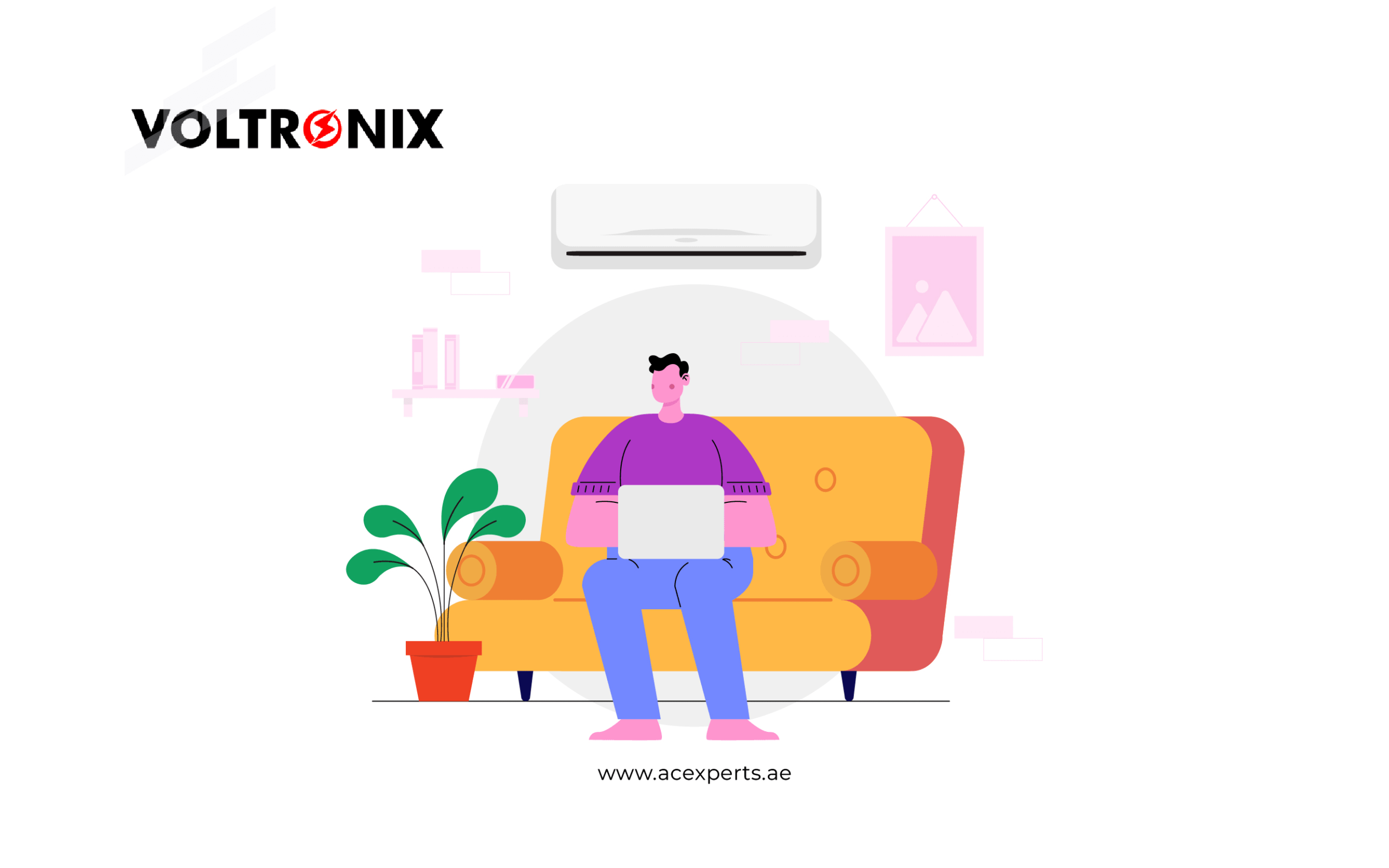When looking at the ideal air conditioner size, it means that you will be able to keep cool without using up resources or ending up paying more money. The most frequent error people tend to commit when it comes to the selection of AC units is either linearly too big or too small and it, therefore, leads to improper operation, increased monthly bills and an unpleasant feeling of comfort. This guide will help you to know how to select the right size of an AC in any given room be it a small bedroom, a busy open office, or the conference room.
Why AC Size Matters
When you select an AC that suits your room’s comfort requirements, it results in better comfort, more efficiency, and improved indoor air quality. An oversized AC blows the cooled air too rapidly, causing humidity problems. On the other hand, an undersized AC runs constantly, unnecessarily increasing your electricity bills without keeping you cool. To avoid these issues, it’s important to choose the right size and ensure regular ac service in Dubai to maintain peak performance and energy efficiency.
Understanding AC Capacity: What Is a “Ton” or BTU?
The cooling capacity ratings of AC units are rated according to the amount of cooling provided by the manufacturers in British Thermal Units (BTU) or tons (1 ton = 12000 BTUs/hr). The proper size is determined by the size of the area and other various factors.
Step 1: Measure Your Room or Space
Use your tape measure in meters or feet to take the length and width measurements of each room that you wish to cool. To get the area in square meters or square feet multiply these. When the buildings have irregular shapes, divide the room into pieces, measure each piece and calculate the areas.
- A bedroom: 5m x 4m = 20m² (or about 215 sq ft)
- Small office: 6m x 5m = 30m² (about 323 sq ft)
- Large meeting room: 10m x 8m = 80m² (about 860 sq ft)
- Open office: 15m x 12m = 180m² (about 1,940 sq ft)
Step 2: Match Area to AC Size
Use the following rule-of-thumb chart for split/window AC units:
| Room Size (m²) | Room Size (sq ft) | Required AC Capacity |
| Up to 10m² | Up to 110 | 0.75 ton / 9,000 BTU |
| 11–15m² | 120–160 | 1 ton / 12,000 BTU |
| 16–22m² | 170–240 | 1.5 ton / 18,000 BTU |
| 23–33m² | 250–355 | 2 ton / 24,000 BTU |
| 34m²+ and offices | 360+ | Multiple/central AC |
If you’re cooling a large office, consider using more than one unit or a central/ducted system. For open-plan offices, consult with an AC professional to size the main system, as factors like partition walls, windows, and heat from equipment impact requirements.
Step 3: Adjust for Special Factors
- Height of the room: The chart above takes into consideration a normal height of the ceiling (approximately 2.7m or 9ft). Increase AC size by 10-20 percent of the higher ceiling.
- Sunlight: Rooms whose windows receive a lot of sun must have greater cooling abilities. Add 10 per cent to sunny rooms.
- Occupation: The more people, the more heat is generated. Add an additional 600 BTU of each additional person more than two in the room particularly in offices, classrooms or meeting rooms.
- Appliances: The electronic equipment produces heat. Where there are a lot of computers, printers or kitchens, give about 10-20 percent of extra capacity.
- Insulation: Rooms with good insulation maintain cool air. The windows and insulation may be low and need a bigger AC
Step 4: Don’t Oversize!
Resist the urge to buy a bigger AC “just in case.” An oversized unit will cool quickly but fail to remove humidity properly, making the room feel clammy, not comfortable. It will also cycle frequently, leading to higher wear and higher power bills.
Examples for Different Rooms
- Bedroom (Home)
- Size: 12m² (130 sq ft)
- Occupancy: 2 people, one window
- Recommendation: 1 ton (12,000 BTU), window or split AC.
- Living Room (Home)
- Size: 20m² (215 sq ft), lots of glass, 4 people
- Recommendation: 1.5 ton (18,000 BTU), consider inverter split AC for energy savings.
- Private Office Cabin
- Size: 15m² (160 sq ft), one computer, one window
- Recommendation: 1 ton (12,000 BTU). Add 10% if exposed to afternoon sun.
- Open-Plan Office Space
- Size: 150m² (1,615 sq ft), 25 people, several computers
- Recommendation: Multi-split or central AC with professional load calculation. Estimate 25–30 tons total, adjust for windows, insulation, and equipment.
- Meeting Room
- Size: 40m² (430 sq ft), up to 10 people
- Recommendation: Two 2-ton (24,000 BTU) split units or centralized cooling.
Step 5: Consult a Professional
While these rules suit most basic situations, complex spaces—like large open offices, retail shops, or buildings with odd shapes—require a professional load calculation. HVAC engineers use detailed formulas and consider the local climate for the most accurate sizing. For businesses and property owners in Dubai, ensuring precise sizing also supports effective ac maintenance Dubai, helping systems run efficiently and prolonging their lifespan. Engaging professionals for both load calculations and maintenance guarantees optimal performance in the region’s challenging climate.
Tips for Energy Efficiency
- Seal windows and doors to prevent cool air from escaping.
- Use ceiling fans to help circulate air.
- Service your AC regularly for best performance and lifespan.
- In offices, schedule cooling to match business hours for savings.
- Choose energy-efficient, inverter-based models for both homes and offices.
Final Thoughts
Choosing the right AC size makes a huge difference in comfort, performance, and energy savings—whether at home or in your workspace. Measure your spaces, factor in special conditions, and use the recommendations above to select the perfect unit. For large spaces and offices, always get an expert load assessment for best results. This way, you can create a cool and comfortable environment year-round, no matter where you are.









